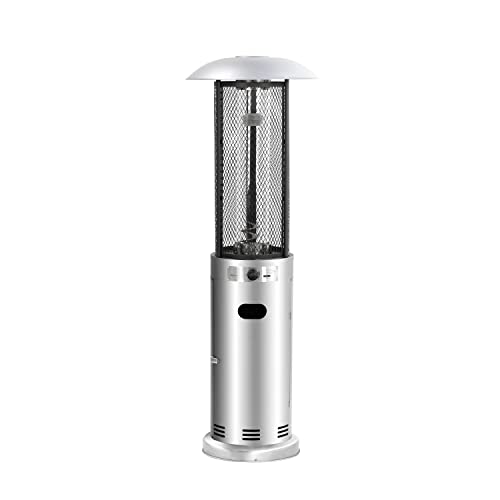Buying Gas Radiant Heaters: A Comprehensive Guide
Gas radiant heaters have actually acquired popularity in the last few years for their performance and capability to supply instant warmth. As more house owners and organizations try to find ways to keep their spaces comfortable, understanding the features, benefits, and factors to consider when buying these heating systems can be really useful. This short article explores the complexities of gas radiant heaters, helping prospective purchasers in making informed choices.
What are Gas Radiant Heaters?
Gas radiant heaters are devices that utilize propane or natural gas to produce heat straight into a space. Rather than heating Buy Commercial Patio Heaters , they warm items and individuals in their vicinity, supplying convenience more quickly and efficiently. These heaters are popular for both indoor and outdoor settings due to their adaptability and effectiveness.
Key Features of Gas Radiant Heaters
- Direct Heating: Unlike conventional heaters that warm the air, gas radiant heaters offer direct heat, making them an efficient choice for rapidly heating up spaces.
- Mobility: Many models are available as portable units, enabling them to be quickly moved from one area to another.
- Fuel Variety: Gas radiant heaters can be powered by natural gas or propane, offering users versatility based on accessibility and preference.
- Adjustable Settings: Most gas radiant heaters featured adjustable heat settings, allowing users to tailor the level of heat based on their needs.
Advantages of Gas Radiant Heaters
- Energy Efficiency: These heaters transform gas into heat efficiently, leading to lower utility bills compared to electrical heaters.
- Quick Heating: Radiant heat is felt almost right away, making these heaters ideal for sudden temperature drops.
- Low Maintenance: Gas radiant heaters usually require less maintenance than electrical models, making them a problem-free option.
- Environmentally Friendly: When powered by clean natural gas, these heaters can be a more ecologically sustainable choice compared to other heating methods.
Types of Gas Radiant Heaters
When it pertains to selecting a gas radiant heater, it's important to understand the various types available. Below are the most typical options:
- Indoor Gas Radiant Heaters: Designed for indoor areas, these heaters are normally vented or unvented and often featured built-in security features.
- Outdoor Gas Radiant Heaters: Commonly utilized in patios or outdoor dining locations, these heaters are created to endure the components.
- Wall-Mounted Gas Radiant Heaters: A space-saving alternative, these systems are ideal for smaller areas and can be equipped with different heat outputs depending on the area's requirements.
- Freestanding Gas Radiant Heaters: These portable models can be utilized in various areas, best for those who require flexibility.
Buying Guide: How to Choose the Right Gas Radiant Heater
When acquiring a gas radiant heater, a number of aspects should be considered to ensure you select the best design for your space:
1. Heating Capacity
- Measured in BTUs (British Thermal Units), the heater's capacity figures out just how much location it can effectively warm. Buyers should assess their particular needs based upon room size.
| Space Size (sq ft) | Recommended BTUs (for Gas Radiant Heaters) |
|---|---|
| 100 - 200 | 5,000 - 10,000 BTUs |
| 200 - 400 | 10,000 - 20,000 BTUs |
| 400 - 600 | 20,000 - 30,000 BTUs |
| 600 - 800 | 30,000+ BTUs |
2. Type of Gas
- Think about whether you will be using propane or natural gas, as different heaters deal with various fuel types.
3. Security Features
- Search for designs equipped with safety functions such as automated shut-off valves, tip-over security, and oxygen exhaustion sensors.
4. Installation Requirements
- Some heaters may need professional installation, especially vented designs. Make certain to think about the costs and requirements connected with installation.
5. Mobility
- If flexibility is necessary, consider portable models that can be quickly moved from one place to another.
Installation and Maintenance
Gas radiant heaters are normally straightforward to install, particularly portable designs. However, vented options might require expert installation to guarantee they meet regional security codes.
Maintenance usually involves:
- Regular cleaning to avoid dust accumulation.
- Checking gas connections and fittings for leakages.
- Guaranteeing safety features are practical.
Tip: Regular checks around the unit can help extend its lifespan and maintain security.
Regularly Asked Questions (FAQs)
Q1: Are gas radiant heaters safe for indoor use?A1: Yes
, as long as they are effectively vented and equipped with needed security features, they can be safely used inside.
Q2: Can gas radiant heaters be utilized in enclosed spaces? Gas Powered Heaters : Unvented gas heaters can pose dangers in enclosed areas due to prospective suffocation or carbon monoxide buildup. Always guarantee adequate ventilation. Q3: How do I understand what size heater I need? Outdoor Heating Options : The proper size depends upon the location you mean to heat. Describe the BTU chart
above to identify your requirements. Q4: What is the distinction between propane and gas heaters?A4: The main distinction depends on their energy source
; propane is provided by means of tanks, while natural gas is normally piped into homes. Q5: How can I optimize efficiency?A5: Ensure the heater is appropriately sized for your space, maintain it routinely, and consider using it in combination
with other heating methods for maximum comfort. Gas radiant heaters can be an excellent addition to any home or organization, providing energy-efficient and fast heating solutions. By comprehending the various types, functions, and considerations
when acquiring, purchasers can make informed choices that satisfy their heating requires. With the right choice, these heaters offer comfort, dependability, and an inviting environment during chillier seasons.

